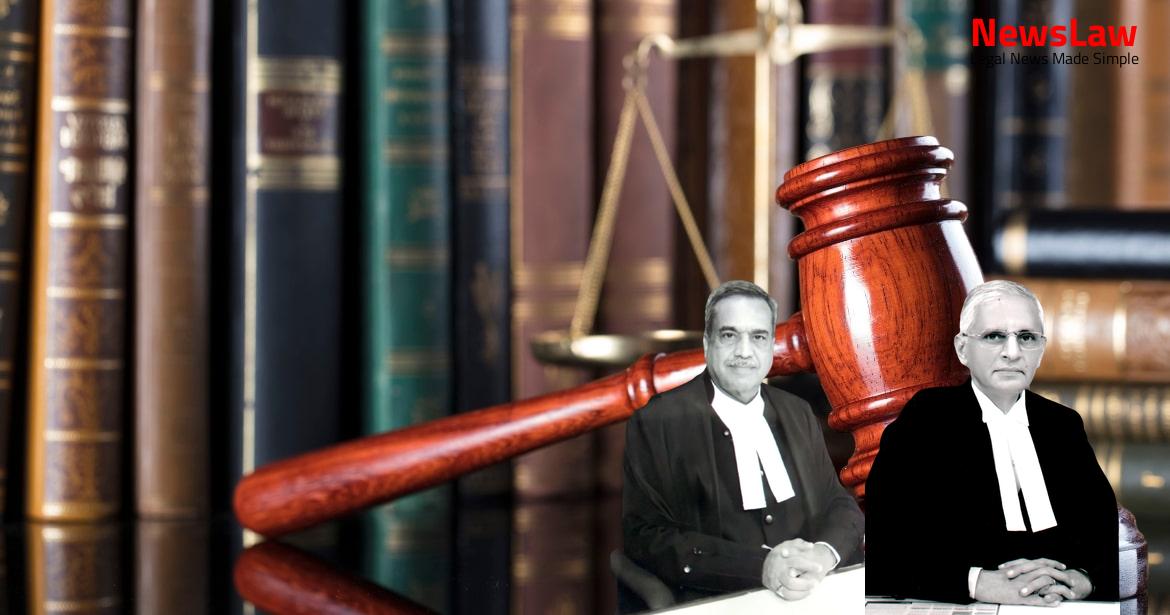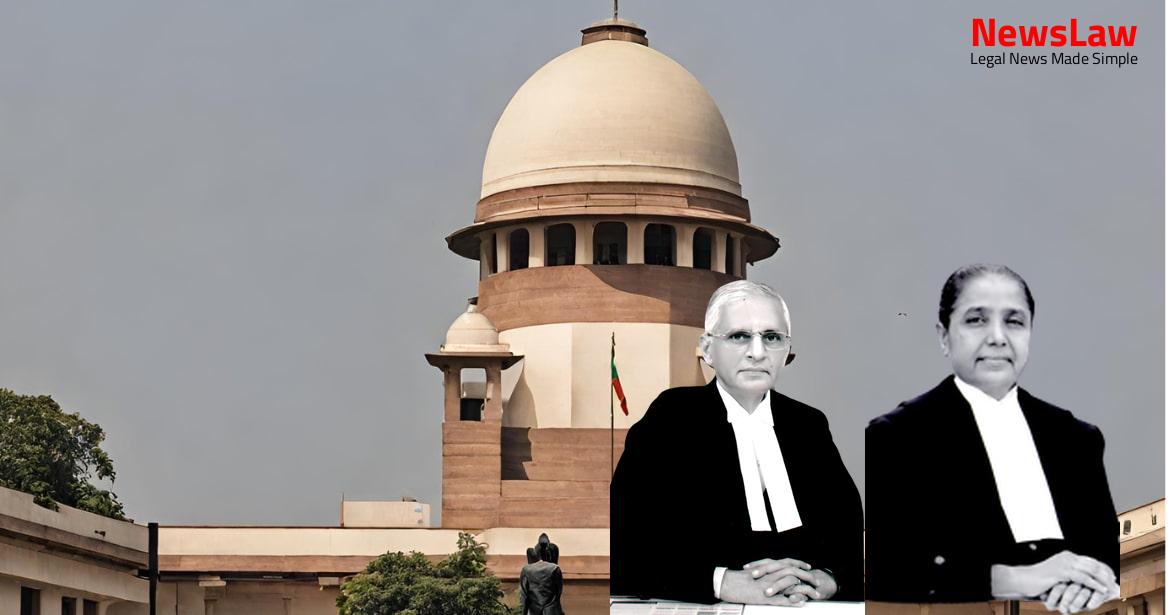Exploring the meticulous legal evaluation of dying declarations in a high-stakes murder trial sheds light on the complexities of the justice system. The court’s detailed examination of multiple statements, procedural correctness, and the significance of inconsistencies in testimonies showcase the rigorous standards applied in determining guilt or innocence. Let’s unravel the legal intricacies together in this intriguing case analysis.
Facts
- The incident involving the appellant’s quarrel with Pushpabai and his statement about Kusum Gaikwad being his paramour was communicated to the Investigating Officer.
- Pushpabai caught fire due to her saree falling on the stove while preparing snacks.
- Charges were framed against the appellant under Section 302 IPC.
- Pushpabai succumbed to her injuries at Mayo Hospital, Nagpur.
- The Investigating Officer recorded two dying declarations of Pushpabai.
- The appellant’s brother tried to extinguish the fire by pouring water on Pushpabai.
- Out of fifteen witnesses, seven turned hostile.
- The appellant was a TV Mechanic and had a quarrel with Pushpabai over his relationship with Kusum Gaikwad.
- The appellant was convicted for murdering his wife by setting her on fire.
- The High Court dismissed the appeal against the judgment passed by the Additional Sessions Judge, Nagpur.
- The appellant was convicted under Section 302 of the Indian Penal Code and sentenced to life imprisonment with a fine of ₹ 1,000.
- The deceased, Pushpabai, and the appellant were married in March 1994.
- The trial court relied on two dying declarations of the deceased and the testimonies of PW-2 and PW-12 to convict the appellant.
- The appellant was handed down a sentence of life imprisonment with a fine.
Also Read: Time as Essence of Contract in Sale Agreement: Legal Analysis
Arguments
- Learned counsel for the appellant argued that there were contradictions between the statements of the deceased before different witnesses.
- The deceased’s statements to PW-9 differed from those made to PW-2 and PW-12 regarding the cause of the quarrel.
- The appellant’s counsel contended that if written dying declarations were rejected due to loopholes, oral statements should not have been relied upon.
- Reference was made to a case for discarding inconsistent dying declarations.
- Despite the rejection of written dying declarations, the High Court upheld the trial Court’s judgment based on oral statements and chemical analysis.
- The appellant challenged this decision in the present appeal, questioning the reliance on oral dying declarations made during trial.
- The respondent argued that the written dying declarations were consistent and clearly implicated the appellant in setting the victim on fire.
- The fitness certificates of the victim indicated she was sound of mind when giving the statements.
- Oral dying declarations made by the victim to her father and a mediator were deemed consistent and credible.
- The narration of events regarding the victim being set on fire remained consistent across statements.
- Chemical Analyser Report of seized clothing supported the prosecution’s claim of the victim being set on fire by the appellant.
Also Read: Retirement Age of PTI/Sports Officer in University
Analysis
- Statements made by a person regarding the cause of death or circumstances leading to their death are considered relevant and admissible in court.
- These statements can be oral or in writing and are admissible if the cause of death is in question.
- The statements must have been made by the deceased person directly to a witness to be considered admissible.
- In cases involving multiple dying declarations, the Court must carefully scrutinize each one to determine consistency in material particulars before acceptance.
- Validation of a dying declaration can be sought from attending facts, circumstances, and other evidence without strict corroboration.
- The fitness of the declarant to make a statement, certified by a doctor, is essential to establish the truthfulness of the dying declaration.
- If there are inconsistencies or infirmities in a dying declaration, it cannot be the sole basis for convicting the accused.
- The High Court discarded two written dying declarations of the deceased due to procedural lacunae by SEM (PW-9) and IO (PW-14).
- The oral dying declarations made by the deceased to her father (PW-2) and a family friend (PW-12) were found to be unreliable due to being interested witnesses and contradictory to recorded versions.
- The High Court found deficiencies in the first dying declaration recorded by IO (PW-14) and disregarded it for various reasons.
- The Court highlighted the sanctity of dying declarations as evidence but emphasized the need to scrutinize oral declarations with caution.
- Multiple discrepancies were noted in the procedures followed by SEM (PW-9) and IO (PW-14) while recording dying declarations, leading to their rejection by the High Court.
- The court stressed on the importance of ensuring voluntariness, lack of tutoring, and mental fitness of the deceased while recording dying declarations.
- The dying declarations, both written and oral, were made by the deceased on the same day when she had suffered severe burn injuries, raising doubts about her mental and physical capacity to give accurate statements.
- The inconsistency in the reasons cited for the incident in the testimonies of PW-2 and PW-12, where they mentioned dowry demands and character suspicion but not the alleged illicit relationship of the appellant, questions the reliability of their statements.
- The prosecution failed to provide corroborative evidence to support the claims made by PW-2 and PW-12, making it unsafe to solely rely on their testimony to incriminate the appellant.
- Considering the principles governing the evaluation of evidence from multiple dying declarations, the court found it difficult to agree with the conclusion reached by the High Court, emphasizing that the evidence of PW-2 and PW-12 is insufficient to establish the appellant’s guilt for the murder of his wife.
Decision
- The appellant is acquitted of all charges and directed to be set at liberty
- Impugned judgment is quashed and set aside
Case Title: UTTAM Vs. THE STATE OF MAHARASHTRA (2022 INSC 634)
Case Number: Crl.A. No.-000485-000485 / 2012



